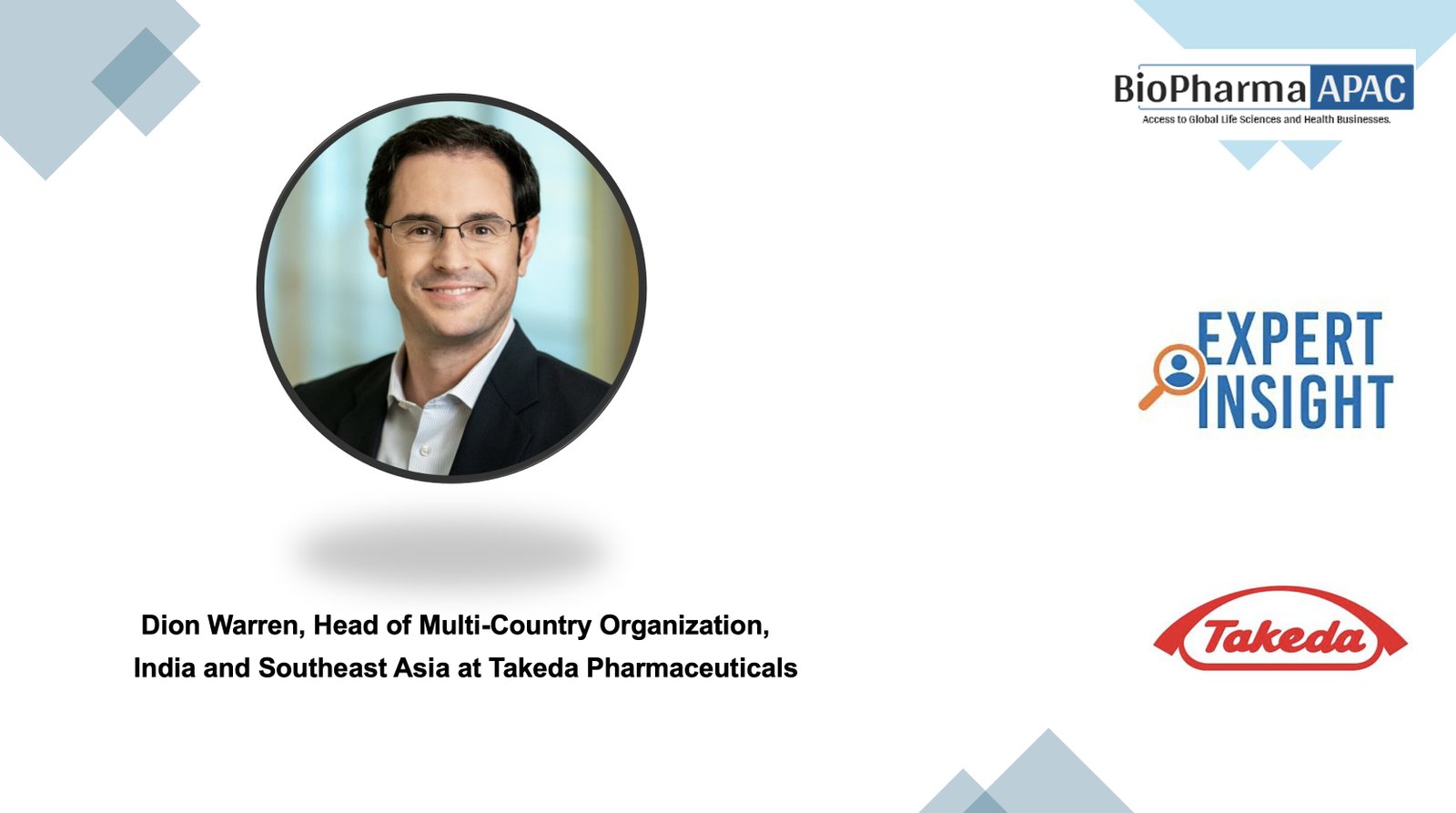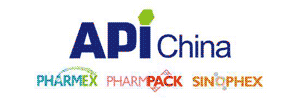Innovating for Health Equity: Takeda's Blueprint for Medicine Access in APAC with Dion Warren
04 March 2024 | Monday | Interview

What specific challenges do India and Southeast Asian countries face in medicine access, and how do they differ from other regions?
In India and Southeast Asia, access to essential medicines, especially complex or innovative treatments for lymphoma, other oncology or specialty gastroenterology and rare immunology or metabolic diseases pose unique challenges due to a variety of factors. These factors include the diverse range in healthcare system maturity, variation in economic wellbeing within each country, the rural-urban divide, underdeveloped healthcare infrastructure, and limited health insurance coverage. These obstacles hinder the pursuit of diagnosis, treatment and universal health coverage and create barriers to proper healthcare for individuals in low- and middle-income countries within the region.
While countries such as Singapore is categorized a high-income status, others, such as Indonesia, the Philippines or Vietnam are considered low- to middle income nations. The economic disparities among these countries contribute to gaps in healthcare services, including access to medicines. This situation is further exacerbated by the higher costs of medications in comparison to the average income of the population. In the Philippines, for example, costs for cancer treatment can go beyond USD 17,000, with a large part of this being borne by the patient – a feat that is only managed by a few. In addition, the rural-urban divide poses a considerable challenge as well, since rural areas often lack adequate healthcare infrastructure, including diagnosis, pharmacies and healthcare facilities. Long travel distances and logistical challenges further hinder the population’s ability to access the necessary medications and healthcare, resulting in delays or even complete unavailability of life-saving medicines.
Insufficient healthcare facilities, a shortage of trained healthcare professionals, and inadequate distribution networks all contribute to the challenges faced by many parts of the region. Countries such as India and others have a shortage of healthcare facilities, especially in rural areas, where most of the population resides. Additionally, while some countries have established universal health coverage systems, others still struggle with lower levels of health insurance coverage, leaving a substantial portion of the population without adequate access to needed medicines as they may lack the financial means to afford the necessary treatments and healthcare support.
Could you share key outcomes from the Access to Medicines Summit that impact India and Southeast Asia?
Featuring the theme “Building Bridges – A Blueprint for Collaborative and Innovative Access to Medicines”, the two-day Access to Medicines Summit 2024 was a platform to engage various stakeholders and share best practices from across the region, foster collaboration, develop blueprints and advocate for policy changes.
While partnerships remain key to bringing societal changes, the role of healthcare system strengthening programs cannot be ignored. Developed to identify and address barriers to access across the patient journey, programs to strengthen the healthcare system itself continue to remain pivotal to ensuring equitable access to medicines. As covered in multiple discussions during the Summit, it was agreed across the board that successful programs should emphasize collaboration, local relevance, sustainable integration into local healthcare systems and effective impact measurement. With holistic assessments that support the evolution of public healthcare systems and ongoing collaborations with various healthcare stakeholders, we believe that sustainable equitable access to medicines is attainable in Southeast Asia, India and beyond.
What best practices has Takeda implemented to improve medicine access in India and Southeast Asia?
The most effective and sustainable solution to close the affordability gap are national reimbursement programs, however, they can take years to mature and provide access. Innovative Patient Assistance Program (PAPs), on the other hand, aim to provide eligible patients with more immediate access to innovative treatments, improving their quality of life despite potential financial limitations. For instance, Vietnam’s first PAP to bridge the affordability barrier to innovative treatment options for Hodgkin lymphoma saw the enrolment of 48 patients within one year, providing them with optimal treatment duration and helping overcome challenging financial circumstances. Such programs have a significant impact in countries like Vietnam and many countries in Southeast Asia where household direct out-of-pocket health expenditure, as a share of the total health expenditure can range anywhere from 50% to 70%. There are many other examples of similar PAPs in Indonesia, the Philippines and rest of Southeast Asia which face the same affordability challenges. These PAPs are an effective approach to ensure patients have access to innovative treatments and the complete course of treatment prescribed by their physicians, while the country’s reimbursement pathway continues to be formalized to enable sustainable access.
The second approach involves establishing public-private partnership to strengthen health systems. No single entity can effectively act alone and have the required impact given the large scale of the global healthcare challenge. This is especially the case for Southeast Asian countries with fewer resources. Engagement with local authorities and partners, such as Centers of Excellence, referral networks and caregiver networks are critical to scale impact and unlock barriers along the entire patient journey, from disease prevention, screening and diagnosis to treatment and patient support. Thailand, for example, has implemented a cost-sharing model to assess and determine how much financial support a patient will need to complete their treatment course based on their economic conditions. Importantly, this cost-sharing model also determines how much of the cost will be covered by other parties, such as insurers, pharmaceutical companies, and the government. In addition, it allows patients to access their full course of required innovative treatment by splitting the cost between several parties – something that is only possible when parties from the wider ecosystem work together in partnership.
How crucial are international partnerships in enhancing healthcare in the region?
Collaboration brings together diverse perspectives, expertise, and resources that can be instrumental in addressing complex healthcare challenges. By fostering international partnerships, we can leverage global knowledge and best practices to drive innovation, enhance healthcare delivery, and expand access to quality treatments and therapies.
In India and Southeast Asia, where healthcare systems vary across countries, international partnerships enable us to bridge gaps, create synergies and leverage expertise. These collaborations facilitate knowledge transfer, capacity building, and the exchange of scientific advancements, ultimately benefiting patients and healthcare professionals in the region.
These partnerships can extend beyond the pharmaceutical industry. Through collaborations with governments, healthcare organizations, academia, and non-governmental organizations, we can collectively address the evolving healthcare needs in the region. Additionally, international partnerships promote the sharing of regulatory frameworks and standards, which are essential for ensuring patient safety and the quality of healthcare services and medicines. By aligning efforts and working together, we can navigate regulatory complexities and foster an environment that supports the development and access to innovative therapies.
What innovative approaches is Takeda exploring to overcome economic and infrastructure barriers in India and Southeast Asia?
To overcome the economic and infrastructure barriers in the region, we continue to collaborate closely with governments and a diverse set of stakeholders within the health care community to enable sustainable access to innovative treatments.
Take the PAP in Vietnam as an example: We worked with the Vietnamese Ministry of Health and a diverse set of implementation partners to conduct needs-based assessments of patients’ financial circumstances, allowing us to provide tailored and flexible financial support for eligible patients with a medical need. This has enabled eligible patients in Vietnam to access the complete course of innovative treatment prescribed by their physicians, regardless of their ability to pay, and receive the optimal treatment duration despite financial situation.
Can you outline Takeda's plans to address medicine access in the region?
On improving access to medicines, we will continue to broaden access by working at the local level to expand the breadth and depth of access through access and innovative funding models including Patient Assistance Programs (PAPs), which provide access to innovative treatments by determining support required on an equitable patient-by-patient basis.
We are also focused on forging local partnerships and shaping policies to help strengthen health care systems for the future. An optimal way to ensure patients have timely access to life-transforming medicines is by building trusted, effective and sustainable local partnerships working for the same cause as no single entity can be effective acting alone. Most importantly, for us, Access to Medicines is an integral part of our business strategy as we mobilize resources and expertise internal and external to Takeda with clear the clear goal on creating sustainable access to innovative treatments and healthcare needed by the patient community.
What motivates your focus on improving access to medicines in Southeast Asia?
As a company we are focused on improving people’s lives by researching, developing and bringing to market new and better medicines and vaccines that help to address the world’s most pressing health care needs. To us, access to medicines is about better health – for patients everywhere, regardless of their ability to pay. It’s about respecting our common human dignity and putting the patient at the center of everything we do. That’s why our Access to Medicines ambition is integral to our wider global and local business strategy, and we are committed to deliver real impact for people on a sustainable basis who may otherwise be facing a lack of access to needed medicines.
*****
ASEAN< The State of Higher Education in Southeast Asia, https://asean.org/book/the-state-of-higher-education-in-southeast-asia/ Accessed January 2024
Philippines Institute for Development Studies, High treatment costs a death sentence for many PH cancer patients, https://www.pids.gov.ph/details/news/in-the-news/high-treatment-costs-a-death-sentence-for-many-ph-cancer-patients#:~:text=In%20the%20Philippines%2C%20the%20cost,have%20cancer%20in%20this%20country%E2%80%A6
Most Read
- Top 25 Biotech & Biopharma Leaders in Sustainable Innovation, 2025
- China’s Biopharma Dealmaking Surges in H1 2025, Driven by Record Licensing and Oncology Focus
- Chikungunya in China: How a “Forgotten” Arbovirus Found the Perfect Storm
- How Innovation Gaps in Biopharma Raise New Safety Concerns
- Smart Implants and the Future of Musculoskeletal Injury Treatment
- How Ethical Gaps in Psychiatry Could Undermine Biopharma Progress
- The Evolving Landscape of Women’s Health Innovation in the Asia-Pacific
- Using NLP-Driven Decision Support in Emergency Health Assistance
- Taiwan Steps Into the Global Spotlight With a New Cancer Therapy
- The Role of Unique Device Identification (UDI) in Tracing Medical Device Safety
- The Importance of a Patient’s Mental Health During Clinical Trials
Bio Jobs
- The State of Biotech and Life Science Jobs in Asia Pacific – 2025
- Avantor’s New CEO Ligner Aims to Unlock Global Potential and Deliver Shareholder Value
- AstraZeneca Commits $50 Billion to U.S. Expansion by 2030 in Biggest-Ever Global Investment
- Thermo Fisher, SAMRC, and South Africa’s Department of Science and Innovation Launch CATIR to Nurture Next-Gen Scientists
- Cube Biotech Appoints Former Sartorius CEO Dr. Joachim Kreuzburg to Board of Directors
- FDA’s AI Transition Marks a Turning Point in Drug Review: Industry Faces Pressure to Adapt Amid 20% Workforce Cut
- WuXi XDC Completes Mechanical Build of Singapore Bioconjugate Manufacturing Hub
News
Editor Picks











